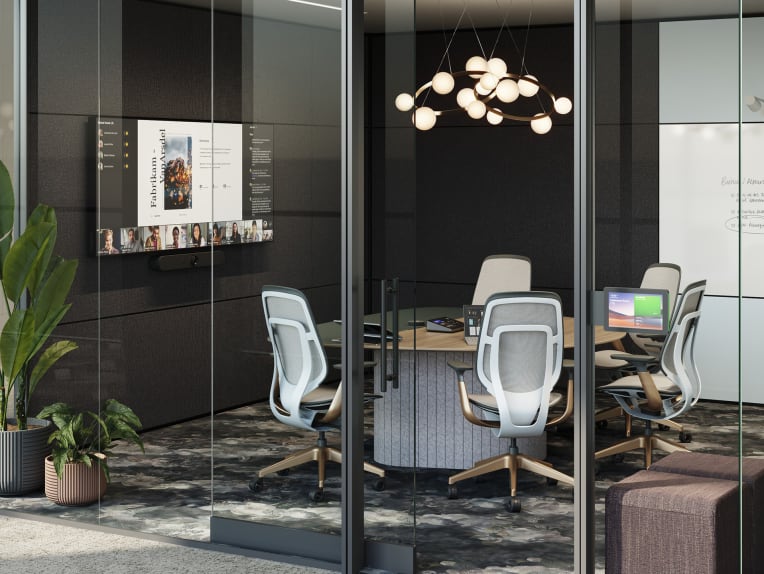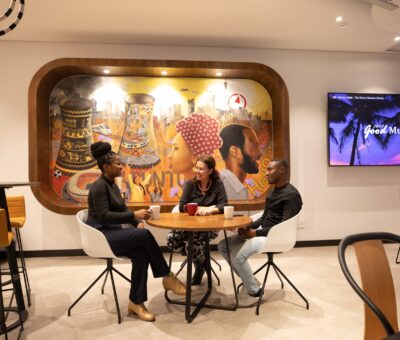Giant Leap: As power Outages intensify, should we work outdoors more often in SA?
Should we work outdoors more often in SA? Giant Leap shares some of the benefits of the Biophilic workplace …
South Africa has one of the world’s best climates and our workspaces could soon follow the global trend of working more outdoors such are the health, productivity and sustainability benefits of being more closely connected to nature.
Linda Trim, Director at Giant Leap, one of South Africa’s largest workplace design consultancies, said that the ‘biophilic’ concept is an approach in design that aims to increase the connection of building occupants to the natural environment.
“Through elements like natural lighting, ventilation, natural landscapes and space conditions, buildings serve as the bridge allowing people to connect with nature while indoors.
“But increasingly it goes further than bringing the outdoors in: people are actually working outside. We think more South African companies will increasingly adopt this popular global trend. Direct contact with greenery is the most straightforward and widely used method of fostering that human-and-nature connection.”
Anthony Karam, Giant Leap’s Head of Design, said:”We have recently completed a design brief for a leading international business process outsourcing company for which we created an indoor forest and marketplace to connect the inner city workspace to a natural feeling space for employees to break away, engage and socialise between calls.”
Trim noted that for both interiors and exteriors, the presence of vegetation, water features, gardens, green walls is fundamental for workers to reap the benefits of proximity to nature. Additionally, natural materials such as wood and stone add to the overall natural feel.
“The feeling of relaxation and respite in these green environments and blue spaces are known to reduce stress, lower blood pressure and heart rate, enhance mood and calm and prompt healing, “ Trim added.
Creating a network of usable outdoor spaces that are hyper specific to surrounding microclimates in South Africa can introduce novel ways of working in the workplace that cannot be replicated at home or in traditional office buildings.
“Consider the direct connections to the static nature of a potted plant or the dynamic nature of a light breeze which have been shown to increase focus as well as provide overall cognitive benefits to the humans.
“The outdoor offices work through an accommodating relationship between the building and the user. Passive techniques such as shade and natural ventilation enable the building to help regulate the comfort level of the occupant while the occupant supports their personal comfort in the form of clothing selection and other factors” Trim noted.
In our burgeoning virtual landscape, embracing the physical, analog space around us is more important than ever. In this sense, claiming personal agency not only allows each of us to create more nimble and optimal working conditions but also scratches that very human itch of being present in the space we inhabit.
At the Arts District project in Los Angeles, approximately 20 percent of its office areas are located outside, with sliding indoor/outdoor connections.
“The design takes full advantage of the Southern California climate, where it is sunny 75 percent of the year with an average temperatures in the 20s – much like South Africa. These office areas are open or partially shaded outdoor with vegetation, covered outdoor areas, with large controllable openings to the interior.
A courtyard is shaded by a photovoltaic array which provides approximately 20% of building energy while shading much of the green office spaces. Movable shades and misters can be used in the summer. In the winter, hats, scarves, and puffer jackets are once again essential fashion accessories in the biophilic workplace – if people still prefer to work outdoors as many will.
“Incorporating biophilic design principles into workplace environments can have far-reaching benefits, both for individuals and for the plane,” Trim added.
“Every locality has its own microclimate and work culture. The biophilic workplace components remain the same, but the proportion of use can be calibrated to local conditions.”
For more visit Giant Leap.
You might also like...
-
Maximize Space, Boost Productivity: The Power of Cluster Desks

Creating a productive, functional office space without feeling cramped can be challenging, especially when dealing with limited square footage. Cluster desks offer a smart solution ...
-
Giant Leap: The Shift to Extremes – Rethinking Office Design in 2025

Office design is undergoing a radical transformation, moving decisively towards environments tailored for extremes in work modes—hyper-focus and hyper-collaboration. This evolution marks a significant ...
-
Indulge in sophistication and style with The Lobby Hotel Creations.

From premium case goods to bespoke furniture pieces, The Lobby is perfectly poised to seamlessly deliver your hotel’s vision. We invite hoteliers and designers ...
























